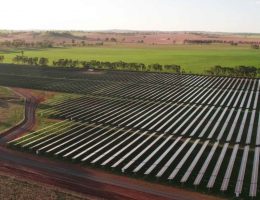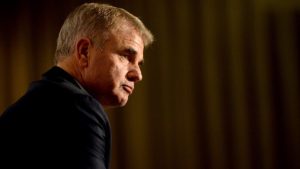Australia’s federal, state and territory energy ministers are set to convene for their next round of talks on Friday, via teleconference, as the federal government ploughs ahead with plans to support new coal-fired power stations in Queensland, and some states start to go it alone to solve grid challenges.
The COAG Energy Council was supposed to meet face-to-face in Brisbane, but it is understood that it will now be held via video conference in response to coronavirus, avoiding the need for ministers and officials to travel and gather in the same venue, and follows a format used for out-of-session meetings of the energy council.
The imagery of state and federal ministers meeting while stranded within their own states highlights a growing sense of separation between the two levels of government, while a growing number of state ministers seek to forge their own path on energy market reforms.
Central to the council’s agenda for Friday’s meeting is a series of updates on work being undertaken by the energy market regulators on improving the planning and co-ordination of energy infrastructure investment.
Since the last energy council meeting, the Energy Security Board and the Australian Energy Market Commission (AEMC) have been working on a series of draft changes to the National Electricity Rules that are designed to implement the Integrated System Plan, to facilitate more proactive investment in network infrastructure and to streamline investment needed support reliable electricity supplies for the next couple of decades.
Ahead of the meeting, the Clean Energy Council has called on energy ministers to endorse the proposed rule changes, particularly those relating to the Integrated System Plan, that will help accelerate investment in new transmission network infrastructure and to reform the processes for projects to connect to the electricity network.
The Clean Energy Council is also keen to see progress that supports the development of dedicated Renewable Energy Zones.
“Investment in large-scale renewable energy collapsed by 50 per cent in 2019, so addressing the growing risks and accelerating transmission investment will be critical to ensuring investment in new renewable energy and energy storage projects picks up again,” the Clean Energy Council said in a letter to energy ministers.
“The Clean Energy Council urges the COAG Energy Council to prioritise reforms that will remove the growing risks placed on clean energy investors and take further steps to accelerate investment in much needed electricity transmission and the development of Renewable Energy Zones (REZs).”
The Clean Energy Council has also called on energy ministers to commission a fresh review of marginal loss factors, a regime that seeks to account for electricity losses in transmission network infrastructure, but has seen unpredictable and substantial changes to the revenues received by a number of wind and solar projects, often my as much as a quarter of a projects income.
There are growing concerns over the difficulties being faced by new projects seeking to connect main grid, predominantly effecting new wind and solar projects, which have faced a range of delays and curtailment in some regions as network investment lags behind the growth in new generation capacity.
One of the meetings key agenda items appears to have largely resolved itself in the days leading up to the meeting. The Australian Energy Market Commission (AEMC) stepping back from a rush decision on the Co-ordination of Generation And Transmission Investment (COGATI) proposal that had project developers spooked, but will now be considered in the context of wider system reforms to the energy market.
This move was welcomed by the Clean Energy Council, which said that the original COGATI proposal “would have introduced significant complexity and risk into the market with limited benefit,” and called on the COAG Energy Council to support the ongoing market reform work of the Energy Security Board.
The Energy Security Board has been tasked by the Energy Council to prepare recommendations on how the National Electricity Market can be reshaped to best serve market participants and consumers in a post-2025 market, including a larger change to the way the market operates, in response to the growing participation of renewable energy projects and the empowerment of consumers to manage their electricity use.
The energy council is also expected to hear an update from the Energy Security Board on immediate measures that government and regulators can take to ensure the reliability and security of electricity supplies. As part of this work, the Energy Security Board is set to brief energy ministers on potential changes to the electricity reliability standard.
Despite increased attention on the reliability of the electricity system, according to a ‘health of the NEM’ assessment completed by the Energy Security Board, the reliability standard hasn’t been breached since 2009 when severe droughts impacted electricity supplies.
 However, ministers will consider a potential change to the way the reliability standard is structured, to better account for the infrequent, but disruptive, scenarios where supply may be cut to homes and businesses, particularly during periods of extreme weather and heat.
However, ministers will consider a potential change to the way the reliability standard is structured, to better account for the infrequent, but disruptive, scenarios where supply may be cut to homes and businesses, particularly during periods of extreme weather and heat.
While there is no imminent threat to the reliable supply of electricity in Australia, the forecast level of unserved energy is expected to increase in future years, particularly following the closure of ageing coal-fired generator assets, and will likely spike following the closure of the Liddell power station in New South Wales, unless sufficient new generation capacity is brought online.
 The energy ministers forum may also become a venue for several of the state ministers to vent frustrations at the Morrison government, and some of the energy market bodies themselves, which have been accused of dragging their feet on desperately needed reforms.
The energy ministers forum may also become a venue for several of the state ministers to vent frustrations at the Morrison government, and some of the energy market bodies themselves, which have been accused of dragging their feet on desperately needed reforms.
If so, this would likely include Queensland energy minister Anthony Lynham, who recently wrote to federal energy minister Angus Taylor expressing a “deep concern” over plans to underwrite a new coal-fired power station in regional Queensland.
In the letter, the Queensland minister said that the proposed power station was unnecessary, and could possibly put the viability of some of Queensland’s existing coal generator fleet, and hundreds of jobs, at risk.
Victorian minister Lily D’Ambrosio will also attend the meeting for the first time following new powers being granted to the Australian Energy Market Operator to enter into longer term emergency supply contracts in Victoria, and the passage of new laws through the Victorian parliament aimed at accelerating additional network investment in the state.
The new arrangements, which were recently signed off by the AEMC, are the first in a number of threatened interventions from the Victorian government, that would see it going it alone on energy market reforms, reacting to a sluggish response from the federal government.
The COAG Energy Council meeting will be held on Friday, with ministers releasing communique detailing the decisions and next steps that afternoon.










